
As a small or mid-sized business (SMB) leader, you juggle many responsibilities, and HR compliance is likely one of the most complex. The web of federal, state, and local regulations can be overwhelming. Yet, staying compliant isn’t optional, protecting your business from penalties, lawsuits, and operational disruptions is essential. Let’s explore some common HR risk and compliance issues you may encounter and how to address them effectively. Common HR Risk and Compliance Challenges Recruiting for an Open Position Complying with anti-discrimination laws, such as Title VII of the Civil Rights Act, is crucial during the hiring process. Employers must avoid biases based on race, gender, age, or other protected categories. Fair Labor Standards Act (FLSA) The FLSA sets minimum wage, overtime, and recordkeeping standards. Misclassifying employees as exempt or non-exempt can lead to significant legal trouble. Onboarding a New Hire I-9 verification, tax documentation, and providing mandatory notices (such as workers' compensation information) are just a few onboarding requirements to consider. Providing Employee Benefits The Affordable Care Act (ACA) mandates that businesses meeting certain criteria offer health insurance to employees. Non-compliance can result in hefty penalties. Issuing W-2s and Meeting IRS Deadlines The IRS requires accurate and timely filing of W-2 forms for all employees. Missing deadlines can result in fines. Offering a Retirement Plan The Employee Retirement Income Security Act (ERISA) sets standards for retirement plan administration and fiduciary responsibilities. Mismanagement can lead to compliance violations. Reacting to a Workplace-Related Injury OSHA requires that workplace injuries be properly recorded and reported. Failure to comply can lead to fines and increased scrutiny. Handling Leave Requests Laws like the Family and Medical Leave Act (FMLA) and various state-specific leave regulations require proper handling of leave requests, including those for maternity or medical reasons. Providing Bonuses The IRS governs how bonuses must be taxed. Mismanagement of bonus taxation can lead to penalties for both employers and employees. Paying a Departing Employee The FLSA, along with state laws, dictates when final paychecks must be issued. Late or incomplete payments can trigger legal action. What Does HR Compliance Do? HR compliance ensures your business adheres to all applicable employment laws and regulations. It safeguards your company from financial risks, protects your employees’ rights, and fosters a positive workplace culture. How Do You Ensure HR Compliance? Ensuring HR compliance begins with awareness of the laws and regulations that apply to your business. Here’s how you can stay on track: Create an HR Compliance Checklist Develop a detailed checklist covering all critical areas of compliance, including recruiting, onboarding, payroll, benefits, workplace safety, and termination processes. Develop an HR Compliance Strategy Embed compliance into your company’s culture and processes. Regularly update your policies to reflect changes in the law and provide training for your staff. Invest in HR Technology Modern HR technology and human capital management (HCM) systems can streamline compliance efforts by automating recordkeeping, tax filings, and benefits administration. However, these systems can be costly for SMBs. How a PEO Can Help with HR Compliance Engaging a Professional Employer Organization (PEO) can be a game-changer for SMBs. When you partner with a PEO, you gain access to: Integrated HR Technology State-of-the-art systems improve compliance, boost productivity, and streamline processes from hire to retire, all while offering self-service features for employees. Expert HR Guidance PEOs provide access to a team of HR professionals who offer tailored advice on regulatory compliance, reducing your risk and workload. Cost-Effective Solutions With a PEO, SMBs can leverage enterprise-level resources at a fraction of the cost, ensuring compliance without breaking the bank. Gain Peace of Mind with MPower Partners At MPower Partners, we specialize in helping SMBs find the right PEO that understands your industry and unique needs. We’ll guide you to a solution that ensures compliance, streamlines operations, and frees you to focus on growing your business. Reach out to us today to explore how a PEO partnership can give you peace of mind and more time to lead your business with confidence. www.mpowerpartnersinc.com
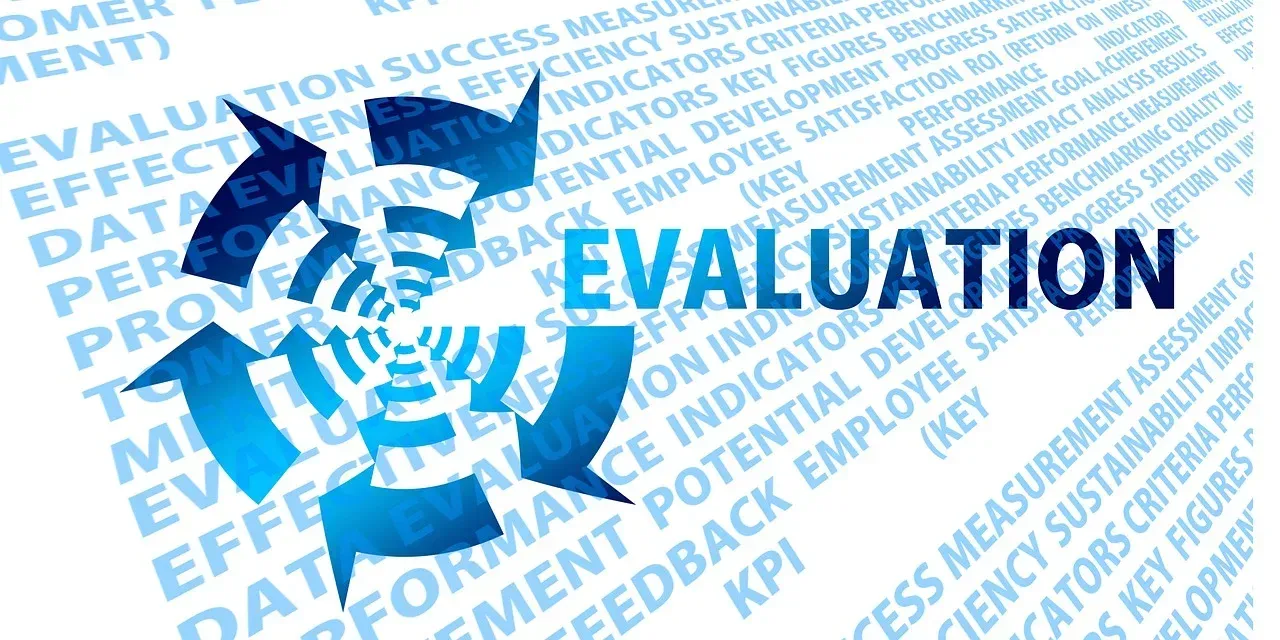
Questions to Evaluate When Assessing Your PEO Choosing a new Professional Employer Organization (PEO) is a significant decision, and switching PEOs without identifying the root issues can lead to recurring problems. It can also result in wasted time, money, and effort. Before making a move, it’s crucial to evaluate your current PEO arrangement. Here are key questions to guide your evaluation: 1. Am I Getting the Best Price I Can Get? This is often the first question businesses ask, but it’s also one of the most challenging to answer. Pricing in the PEO industry can be complex, with bundled services and varied fee structures. Conducting an annual PEO evaluation can help confirm if you’re getting competitive pricing or if adjustments need to be made. Even if you stay with your current PEO, this review can provide leverage for negotiating better terms. 2. Does My PEO Respond to My Needs Promptly? Surprisingly, many businesses cite the availability and responsiveness of their PEO’s HR representative as a major pain point. A strong PEO-client relationship relies on effective communication. Evaluate whether your PEO is quick, responsive, and proactive in addressing your needs. If not, it might be time to reconsider your provider. 3. Do I Need Better Accounting Features? Modern PEOs use advanced technology and software to streamline processes. These tools save time and money, which is one of the primary reasons for partnering with a PEO. If your PEO’s accounting features are outdated or inefficient, you may not be receiving the value you expect. 4. Is My Billing Transparent and Understandable? Do you know exactly how your PEO fees are calculated and what services you’re paying for? If your billing is unclear, it’s easy to overpay for unnecessary services. Ensure your PEO provides clear and detailed billing statements to help you track costs accurately. 5. Am I Taking Advantage of All the HR Services I’m Paying For? Sometimes, companies purchase a suite of PEO services but fail to use them all. Identify your business’s specific needs and consider whether you’re fully utilizing the services you’re paying for. If not, explore the option of selecting services a la carte to better align with your goals. 6. Does My PEO Help My Business Operate More Efficiently? If your PEO is causing more headaches than solutions, it’s time to reevaluate. The goal of partnering with a PEO is to simplify HR and administrative processes, not add unnecessary complexity. 7. Does My PEO Make a Lot of Mistakes? Mistakes in payroll, compliance, or documentation can be costly and damaging. A reliable PEO minimizes risk and ensures compliance. If your current provider consistently makes errors, it’s a clear sign you need a change. Common Concerns Businesses Have About Their PEO Here are a few of the most frequent issues businesses face with their PEOs: I want more efficiency. I want better communication and responsiveness. I want to ensure I have the best pricing. I am unhappy with payroll technology. There are too many mistakes. We are not using all the services we’re paying for. I want billing transparency. I need better accounting features. I want a local HR representative. I want to save on health insurance costs. I want to cut costs/fees or see where I can save. The Value of an Annual PEO Evaluation An annual PEO evaluation is a powerful tool to ensure your provider aligns with your business’s needs. It can help you: Confirm if you’re partnered with the right PEO. Identify areas for cost savings and improved service. Provide a strategy for negotiating better terms or transitioning to a new PEO if necessary. Conclusion Partnering with the right PEO is essential to streamlining your business operations and reducing costs. However, without proper evaluation, you risk facing the same issues repeatedly. By asking these questions and conducting regular reviews, you’ll ensure your PEO partnership drives value and supports your business’s goals. If you’re considering a PEO evaluation or need guidance on finding the best PEO for your needs, I’d be happy to help. Let’s discuss how you can optimize your HR and administrative processes for greater success.
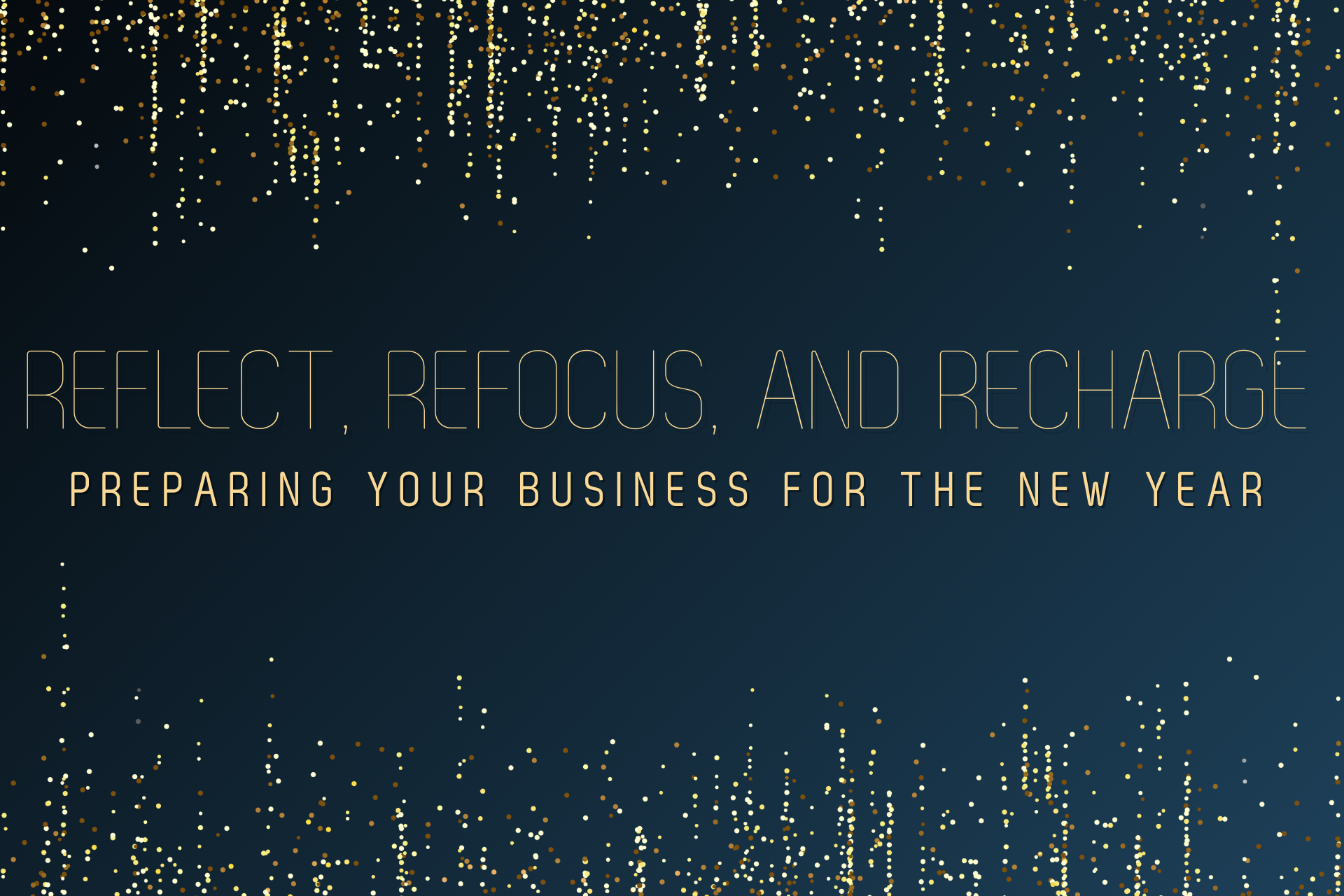
Reflect, Refocus, and Recharge: Preparing Your Business for the New Year As we approach the New Year, it’s the perfect time for business leaders to pause and reflect. Looking back at the past year’s successes and challenges not only provides valuable insights but also helps shape the path forward. For small and medium-sized businesses (SMBs), this period of reflection is particularly crucial, as it often reveals key opportunities to streamline operations, reduce costs, and mitigate liabilities. One critical takeaway for many employers? Your most valuable asset is your people. Employees drive innovation, productivity, and ultimately, your success. This realization underscores the need for efficient HR processes that support and empower your team. Why Streamlining HR Is Key for SMBs Unlike larger corporations with dedicated HR departments, SMBs often face the dual challenge of managing lean resources while striving to remain competitive. Inefficient or outdated HR systems can create bottlenecks, leaving your employees unsupported and your business vulnerable to compliance risks. By focusing on your HR processes now, you can: Reduce Costs: Automate routine tasks and eliminate redundancies. Enhance Employee Experience: Provide better access to benefits, payroll, and support. Mitigate Liabilities: Ensure compliance with labor laws and reduce risk exposure. Steps to Take in the New Year Evaluate Current Processes Take a close look at how HR tasks are managed. Are manual processes slowing you down? Is compliance a concern? Identifying inefficiencies is the first step to improvement. Leverage Technology and Expertise Outsourcing to a Professional Employer Organization (PEO) can help you streamline payroll, benefits, and compliance, while also giving you access to HR expertise that would otherwise be out of reach for SMBs. Invest in Your Team Whether through professional development opportunities, enhanced benefits, or a focus on culture, investing in your employees directly impacts morale and retention. Set Clear Goals Use insights from the past year to set measurable objectives for improving operations and fostering growth in the year ahead. A New Year, A New Opportunity As a business leader, the New Year is your opportunity to build a stronger foundation for growth. By focusing on your employees and refining the processes that support them, you can position your business for success—not just for the year ahead, but for the long term. Let’s make 2024 your most productive and prosperous year yet! Ready to streamline your HR and empower your employees? MPower Partners can help you find the right solutions to support your business goals. Reach out today to start the conversation. MPower Partners specializes in helping SMBs simplify HR, Payroll, Benefits, and more through tailored PEO solutions. www.mpowerpartnersinc.com

The Human Resources (HR) landscape has undergone significant transformation over the past few decades. Once considered a mere administrative function, HR has evolved into a strategic cornerstone of modern business, playing a crucial role in shaping company culture, driving employee engagement, and ensuring compliance with ever-changing regulations. Alongside this evolution, the rise of Professional Employer Organizations (PEOs) has become increasingly popular, offering businesses a more efficient and cost-effective way to manage their HR needs. The Traditional HR Model: Challenges and Limitations Historically, HR departments were often tasked with handling a wide range of responsibilities, from recruiting and onboarding to payroll processing and benefits administration. For small and mid-sized businesses, managing these tasks internally can be overwhelming, especially as the company grows. The complexity of compliance, the need for specialized knowledge, and the constant pressure to cut costs can lead to inefficiencies and errors. In the past, many companies managed HR internally because it was the only option available. However, as businesses began to recognize the limitations of this model, they started seeking alternatives that could provide the same (or better) level of service, but with greater efficiency and expertise. The Rise of PEOs: A New Approach to HR Management Enter the PEO—an innovative solution that has redefined how businesses approach HR. A PEO provides comprehensive HR services by entering into a co-employment arrangement with a company. This means the PEO takes on many of the administrative functions, allowing the business to focus on its core operations. PEOs offer a wide range of services, including payroll processing, benefits administration, compliance management, and employee relations. By leveraging economies of scale, PEOs can often provide these services at a lower cost than a company could achieve on its own. Additionally, PEOs bring deep expertise and industry-specific knowledge to the table, ensuring that businesses stay compliant with the latest regulations and best practices. Can You Do It Yourself? Yes, But... The question many business owners ask is, “Can I manage HR myself?” The answer is yes—technically, you can. However, the more important questions are: Can you do it better? Can you do it cheaper? Let’s break these down. 1.Can You Do It Better? Managing HR internally might work for some businesses, especially those with dedicated HR teams. However, without the specialized expertise that a PEO brings, you may miss out on opportunities to optimize your HR functions, streamline processes, and stay ahead of regulatory changes. PEOs provide access to a team of HR professionals with extensive experience across various industries, ensuring your HR practices are not just adequate but exceptional. 2.Can You Do It Cheaper? The cost of managing HR internally can be deceiving. While you might save on PEO fees, consider the hidden costs: time spent on administrative tasks, potential penalties for non-compliance, and the opportunity cost of not focusing on your core business. PEOs can often provide more competitive benefits packages due to their purchasing power, leading to cost savings for your company and better options for your employees. Defining Value: Beyond Just Cost When evaluating whether to manage HR internally or partner with a PEO, it’s essential to define what value means to your business. Value isn’t just about cutting costs—it’s about what you gain in return. Efficiency: PEOs handle time-consuming HR tasks, freeing up your team to focus on growth and innovation. Expertise: PEOs bring specialized knowledge that can help you navigate complex HR challenges, from compliance to employee engagement. Employee Satisfaction: With access to better benefits and streamlined processes, your employees are likely to be more satisfied and productive. Risk Management: PEOs help mitigate risks associated with HR compliance, reducing the likelihood of costly legal issues. Conclusion: Making the Right Choice for Your Business The evolution of HR has brought about significant changes, and the rise of PEOs offers a compelling alternative to traditional HR management. While you can manage HR internally, the question isn’t just about capability—it’s about doing it better, smarter, and more cost-effectively. At MPower Partners, we understand that every business is unique, with its own set of challenges and goals. That’s why we’re here to help you navigate the complexities of HR and find the best PEO solution for your needs. Let’s connect and explore how we can add value to your business by optimizing your HR functions and letting you focus on what you do best.

In today's competitive business landscape, companies are constantly seeking ways to streamline operations, reduce costs, and maximize productivity. One solution gaining significant traction is partnering with a Professional Employer Organization (PEO). But what is the return on investment (ROI) of a PEO? Let's break it down. Cost Savings Lower Benefits Costs: PEOs pool employees from multiple companies, leveraging their buying power to secure better rates on health insurance, retirement plans, and other benefits. This can result in significant savings for your business. Reduced HR Overhead: By outsourcing HR functions to a PEO, companies can eliminate the need for a large in-house HR team, saving on salaries, benefits, and office space. Increased Productivity Focus on Core Business: With HR tasks handled by experts, your team can focus on what they do best – driving the core business forward. Employee Support: PEOs offer robust support for employee-related issues, reducing downtime and keeping your workforce engaged and productive. Reduced Liability Compliance and Risk Management: PEOs stay up-to-date with ever-changing employment laws and regulations, ensuring your business remains compliant and reducing the risk of costly legal issues. Workplace Safety: PEOs often provide workplace safety programs and support, reducing the incidence of workplace accidents and the associated costs. T angible ROI Time Savings: The administrative burden of HR can be overwhelming. By offloading these tasks to a PEO, businesses save valuable time that can be redirected towards growth and innovation. Employee Retention: Offering high-quality benefits and support through a PEO can lead to higher employee satisfaction and retention, reducing the costs associated with high turnover rates. Simplifying the Process with MPower Partners If you are considering whether a PEO is right for your business, retaining an independent PEO broker/advisor like MPower Partners can help simplify the process. Our expertise ensures that you find the best PEO for your unique business needs, maximizing your ROI and providing peace of mind. In conclusion, the ROI of a PEO can be substantial. From cost savings and increased productivity to reduced liability and improved employee retention, partnering with a PEO can be a game-changer for your business. With MPower Partners by your side, navigating the PEO landscape becomes straightforward and efficient, allowing you to focus on what truly matters – growing your business.
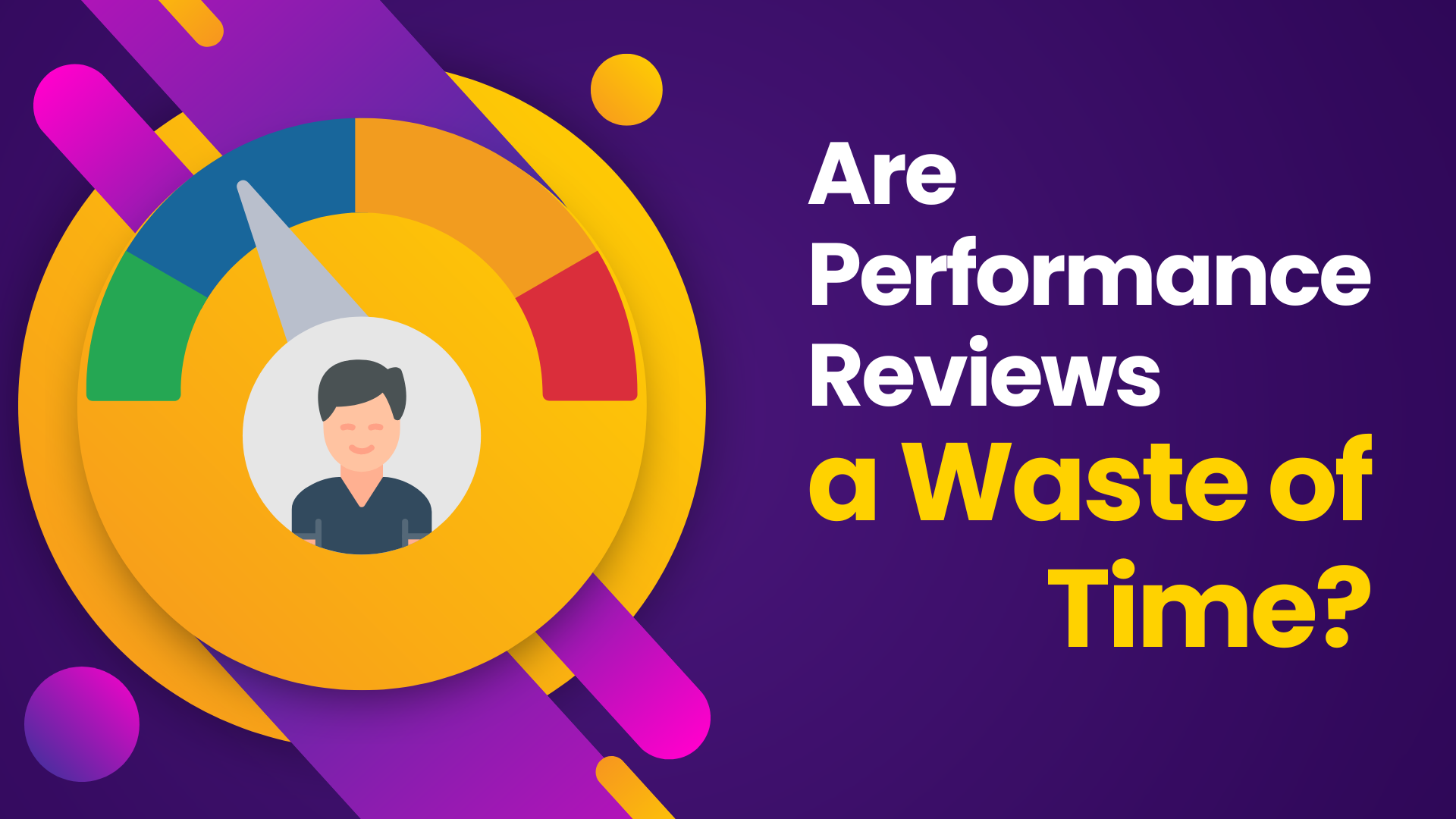
Performance reviews are a staple in many organizations, but are they truly beneficial, or do they simply waste time and energy? Let's explore why employees often despise performance reviews and whether these traditional evaluations do more harm than good. Why Do Employees Hate Performance Reviews? Stress and Anxiety: The anticipation of a performance review can cause significant stress and anxiety among employees. The formal setting and the prospect of being graded can make the process feel more like a judgment day than a constructive dialogue. Retrospective Feedback: Performance reviews typically focus on what employees did well and what they did poorly over the past year. This retrospective approach can be frustrating, as it doesn't provide timely feedback that employees can use to improve their performance in the moment. One-Sided Conversations: Often, performance reviews turn into one-sided conversations where managers do most of the talking. This can leave employees feeling unheard and undervalued, further diminishing the potential benefits of the review. Perceived Inequity: When performance reviews are used to determine promotions and raises, they can create a sense of inequity among employees. The subjective nature of evaluations can lead to perceptions of favoritism and bias, eroding trust in management. Are Performance Reviews More Harm Than Good? Making every employee fill out an evaluation form and then sitting down to discuss it annually can indeed feel like a huge waste of time and energy. Here’s why performance reviews might do more harm than good: Outdated Tradition: Performance reviews are often carried out simply because they are a time-honored tradition, not because they are effective. This adherence to tradition can stifle innovation and prevent the adoption of more effective feedback mechanisms. Lack of Immediate Feedback: Constructive feedback is most effective when given in real-time. Waiting months to address issues or recognize achievements means missing opportunities for immediate improvement and growth. Power Dynamics: The traditional performance review can reinforce hierarchical power dynamics, reminding employees of their place in the organizational structure. This can be demotivating and counterproductive, especially in environments that strive for collaboration and inclusivity. A Better Approach to Feedback Employees need and deserve feedback that helps them grow and improve. Here’s how organizations can move away from traditional performance reviews and towards more effective feedback mechanisms: Continuous Feedback: Encourage managers to provide feedback regularly and in real-time. This approach helps employees make immediate adjustments and fosters a culture of continuous improvement. Two-Way Conversations: Make feedback sessions a two-way dialogue. Employees should feel comfortable sharing their thoughts and concerns, making the process more collaborative and less hierarchical. Focus on Development: Shift the focus from evaluating past performance to developing future potential. Use feedback sessions to set goals, identify development opportunities, and create actionable plans for growth. Tailored Feedback: Recognize that each employee is unique and may require different types of feedback. Tailor feedback to individual needs and circumstances to make it more relevant and impactful. By adopting these strategies, organizations can create a feedback culture that supports employee growth and engagement without the downsides of traditional performance reviews. Ultimately, it's about fostering an environment where feedback is a tool for development rather than a source of stress.
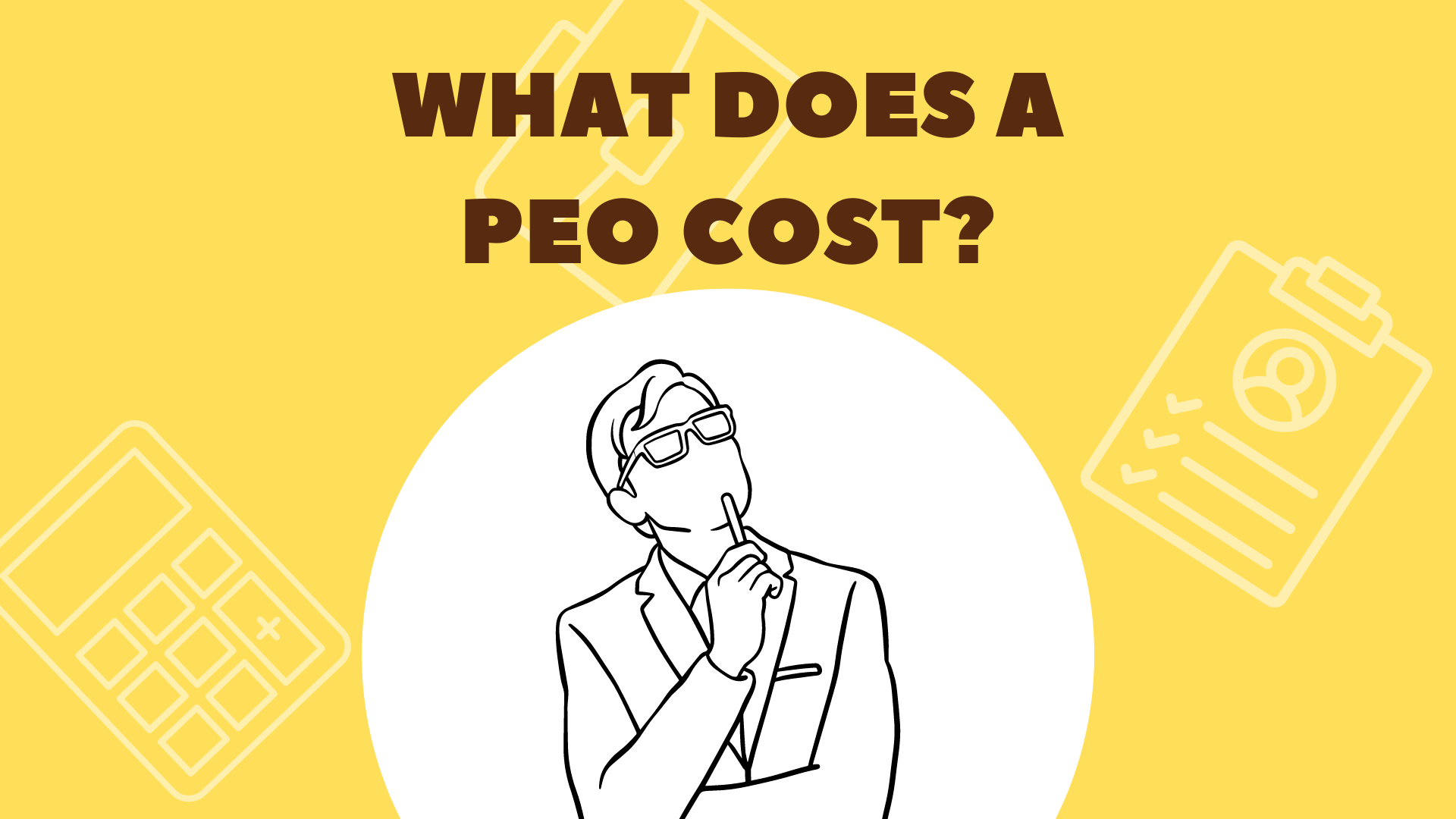
When considering partnering with a Professional Employer Organization (PEO), one of the most common questions is: "What does a PEO cost?" This question is similar to asking, "What does a house cost?" or "What does a car cost?" The answer to all these questions is: it depends on several factors. Understanding PEO Pricing Models PEO pricing structures can vary widely based on the services provided and the specific needs of your business. Here are some of the primary factors that influence PEO costs: Size of Your Business: The number of employees you have will significantly impact the cost. Larger companies might benefit from economies of scale, while smaller companies may have higher per-employee costs. Services Required: PEOs offer a range of services including payroll administration, benefits management, compliance assistance, HR support, and risk management. The more comprehensive the services you need, the higher the cost will be. Industry: Some industries have higher regulatory requirements or greater risk, which can influence the cost. For example, a construction company may have different needs and associated costs compared to a tech startup. Employee Benefits: The types and levels of benefits you wish to offer your employees (health insurance, retirement plans, etc.) will also affect the cost. Premium benefits will naturally come at a higher price. Current HR Infrastructure: If you already have an established HR infrastructure, the transition to a PEO might be less expensive compared to building one from scratch. Common Pricing Models Percentage of Payroll: Many PEOs charge a percentage of your total payroll, typically ranging from 2% to 12%. This model aligns the cost with the size of your payroll, making it predictable and scalable. Per-Employee-Per-Month (PEPM): Another common pricing model is a flat fee per employee per month. This fee can range from $50 to $200 or more, depending on the services included. Bundled vs. À La Carte Services: Some PEOs offer bundled services at a set price, while others allow you to pick and choose services, which can help tailor costs to your specific needs. Additional Costs to Consider Setup Fees: Some PEOs may charge an initial setup fee to cover the costs of transitioning your company into their system. Termination Fees: Be aware of any potential termination fees if you decide to end the PEO partnership. Additional Services: Costs for additional services, such as specialized training or recruitment, may be added on top of the standard fees. The Value Proposition While the cost of a PEO can vary, it's essential to consider the value it brings. By handling complex and time-consuming HR tasks, a PEO allows you to focus on growing your business. Additionally, PEOs can often provide access to better benefits packages at lower rates due to their larger pool of employees. Conclusion Asking "What does a PEO cost?" is much like asking "What does a house cost?" or "What does a car cost?"—the answer depends on numerous factors specific to your situation. By understanding these factors and working with a reputable PEO, you can find a solution that offers both value and cost-effectiveness for your business. If you’re considering a PEO and want to understand what it might cost for your specific business, I would be happy to provide more detailed information and help you explore your options. Let's connect and discuss how a PEO can benefit your organization. www.mpowerpartnersinc.com
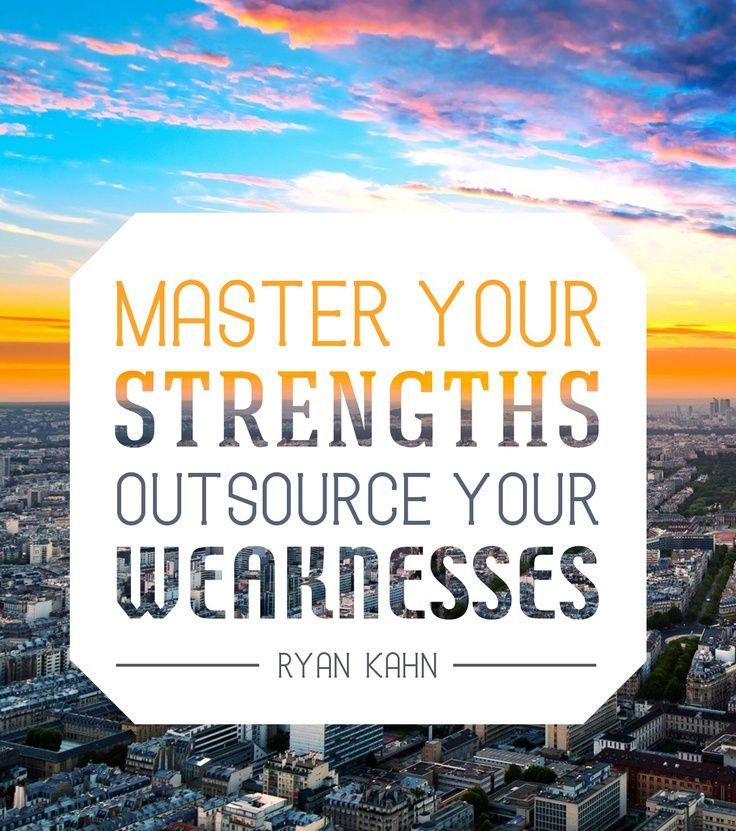
As a business owner, you're no stranger to wearing multiple hats. But when it comes to human resources (HR), are you a DIY "Do It Yourself “owner or do you subscribe to the "Master Your Strengths, Outsource Your Weakness" theory? Let's face it - most business owners didn't dive into entrepreneurship with dreams of becoming HR experts. Yet, managing HR is crucial to the success of any organization. From payroll and compliance to risk management and employee benefits, the demands of being a good employer are vast and complex. Recognizing these challenges, many savvy business owners are turning to outsourcing as a strategic solution. Enter the Professional Employer Organization (PEO) - a dedicated team of HR professionals ready to tackle your employment issues head-on. PEOs offer a comprehensive suite of HR services, tailored to fit the unique needs of your business. Whether you're a small startup or a growing enterprise, outsourcing HR to a PEO can provide a host of benefits. First and foremost, outsourcing HR allows you to focus on what you do best - growing your business. By handing off HR responsibilities to experts, you free up valuable time and resources to concentrate on strategic initiatives and core competencies. But the benefits don't stop there. PEOs are well-versed in the latest HR regulations and compliance standards, helping to mitigate risk and ensure legal compliance. Additionally, they can provide access to top-notch employee benefits programs, helping to attract and retain top talent. Cost savings are another compelling reason to consider outsourcing HR. By pooling resources with other businesses, PEOs can negotiate better rates on services such as healthcare and workers' compensation insurance, resulting in significant cost savings for your organization. However, it's essential to look beyond the bottom line when evaluating the impact of outsourcing on your business. While cost savings are undoubtedly appealing, it's crucial to consider the impact on employee satisfaction and overall organizational performance. Ultimately, the decision to outsource HR is a strategic one that requires careful consideration. But for many business owners, the benefits of partnering with a PEO far outweigh the risks. By leveraging the expertise of HR professionals, you can streamline operations, reduce liability, and position your business for long-term success. So, are you ready to take the leap and outsource your HR? Contact a reputable PEO broker today and discover how outsourcing can transform your business.

In the ever-evolving landscape of retirement planning, staying abreast of legislative changes is paramount for employers seeking to provide robust retirement benefits to their employees. One such legislative update making waves in 2024 is the SECURE 2.0 Act, a successor to the original SECURE Act of 2019. This new iteration introduces several key provisions aimed at enhancing access to retirement plans, fostering savings habits, and offering greater flexibility for savers. Let's delve into some of the significant changes that employers should take note of: 1. Expanded Auto-Enrollment Features: The SECURE 2.0 Act encourages greater participation in retirement plans by expanding auto-enrollment features. Employers will have the option to automatically enroll employees in retirement plans, with the default contribution rate gradually increasing over time. This provision aims to address the issue of under-saving by nudging employees towards building their retirement nest eggs. 2. Increased Access to Multiple Employer Plans (MEPs): MEPs allow small businesses to band together to offer retirement plans to their employees, thereby leveraging economies of scale and reducing administrative burdens. The SECURE 2.0 Act expands access to MEPs by easing certain regulatory requirements, making it more appealing for smaller employers to participate. This broader access could lead to more widespread adoption of retirement plans among small businesses, benefiting both employers and employees. 3. Enhanced Portability of Retirement Savings: A key concern for many employees is the portability of their retirement savings when changing jobs. The SECURE 2.0 Act addresses this issue by facilitating the transfer of retirement account balances between employer-sponsored plans and individual retirement accounts (IRAs). This portability feature provides employees with greater control over their retirement savings and reduces the likelihood of leakage or cashing out when transitioning between employers. 4. Introduction of Lifetime Income Options: To address the challenge of ensuring financial security throughout retirement, the SECURE 2.0 Act promotes the inclusion of lifetime income options within retirement plans. These options, such as annuities or other income-generating vehicles, provide retirees with a steady stream of income throughout their golden years, shielding them from the risk of outliving their savings. By offering these options within employer-sponsored plans, employees can better plan for a secure and comfortable retirement. 5. Expansion of Catch-Up Contributions: For individuals nearing retirement age, catch-up contributions are a valuable tool for accelerating retirement savings. The SECURE 2.0 Act increases the age at which individuals can make catch-up contributions to their retirement accounts, allowing older workers to bolster their savings in the crucial years leading up to retirement. This expansion enables employees to make up for lost time and bridge any gaps in their retirement preparedness. In summary, the SECURE 2.0 Act represents a significant milestone in the ongoing effort to improve retirement security for American workers. By implementing these provisions, employers can play a pivotal role in facilitating greater access to retirement plans, promoting savings behavior, and offering more flexibility and security for their employees' golden years. As we navigate the evolving landscape of retirement planning, staying informed and proactive will be essential for employers seeking to empower their workforce towards a financially secure future.
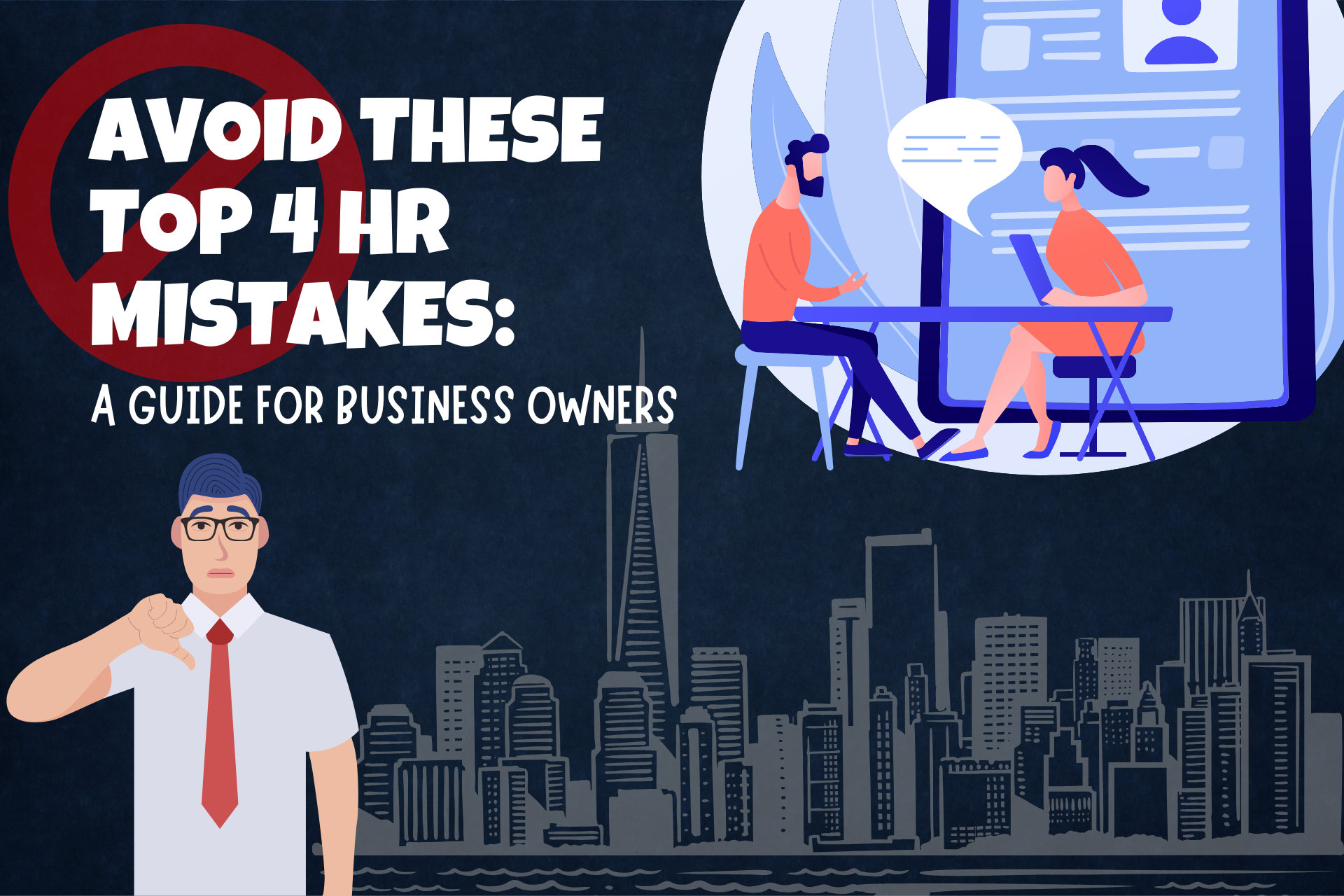
In the dynamic landscape of Human Resources (HR), errors can be costly both financially and in terms of company reputation. From legal ramifications to employee dissatisfaction, the consequences of missteps in HR can be severe. In this blog, we'll delve into four of the most common HR mistakes that businesses make and offer solutions to mitigate these risks. 1. Terminating or Disciplining Employees that Engaged in a Protected Activity One of the most significant legal pitfalls in HR is terminating or disciplining employees who have engaged in protected activities, such as whistleblowing or participating in union activities. Doing so can result in costly lawsuits and damage to your company's reputation. It's crucial for HR professionals and business owners to be aware of employees' rights and protections under the law. Solution: Prioritize thorough training for HR staff and managers on employment laws and regulations. Implement clear policies and procedures for handling complaints and grievances, ensuring that all employees feel safe and respected when raising concerns. Consult with legal experts to ensure compliance with relevant laws and regulations. 2. Failure to Document Performance Problems and Prior Discipline Inconsistent documentation of employee performance issues and disciplinary actions can leave businesses vulnerable to legal challenges and disputes. Without proper documentation, it becomes challenging to justify employment decisions and defend against wrongful termination claims. Solution: Establish a comprehensive performance management system that includes regular evaluations, feedback sessions, and documentation of any performance-related issues. Encourage managers to maintain detailed records of employee performance, including instances of commendation and disciplinary action. Consistency and transparency are key to minimizing legal risks in this area. 3. Failing to Engage in the Interactive Process with Disabled Employees Under the Americans with Disabilities Act (ADA), employers are required to engage in an interactive process with disabled employees to determine reasonable accommodations that enable them to perform essential job functions. Failing to engage in this process can lead to claims of disability discrimination and legal liabilities. Solution: Train HR professionals and managers to recognize requests for accommodation and navigate the interactive process effectively. Foster an inclusive workplace culture that values diversity and supports employees with disabilities. Collaborate with employees and, if necessary, seek guidance from legal counsel to identify and implement reasonable accommodations. 4. Failing to Correctly Pay Overtime Misclassification of employees as exempt from overtime pay or failure to accurately calculate and compensate for overtime hours worked can result in significant financial liabilities for businesses. Wage and hour laws are complex and vary by jurisdiction, making compliance a challenging task for HR departments. Solution: Conduct a comprehensive review of employee classifications to ensure compliance with federal, state, and local wage and hour laws. Implement robust timekeeping systems to accurately track employee hours worked and overtime eligibility. Regularly audit payroll practices to identify and rectify any errors or discrepancies. Partnering with a PEO If your business is struggling with these or other common HR mistakes, consider partnering with a Professional Employer Organization (PEO). PEOs offer comprehensive HR solutions, including payroll, benefits administration, compliance assistance, and risk management. By outsourcing HR functions to a PEO, businesses can mitigate risks, improve compliance, and focus on their core operations. In conclusion, avoiding these top HR mistakes requires proactive measures, ongoing education, and a commitment to compliance. By prioritizing legal compliance, documentation, inclusive practices, and accurate payroll management, businesses can minimize legal risks and create a positive work environment for employees. Remember, investing in HR best practices today can save your business from costly legal battles tomorrow. www.mpowerpartnersinc.com

